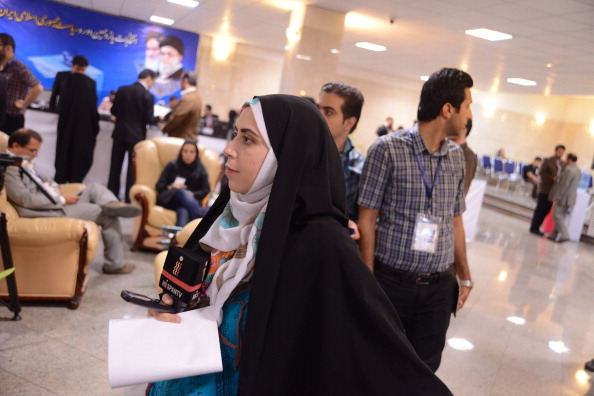TORONTO – Many Iranian journalists who have been the targets of state-sanctioned aggression are suffering from post-traumatic stress disorder and depression, a Canadian study has found.

The symptoms are especially severe for those who have been arrested by Iranian government agents, according to the study being released Thursday.
Toronto-based psychiatrist Anthony Feinstein, an expert on the effects of trauma exposure on war correspondents and other reporters, looked at surveys done by 114 experienced Iranian journalists – more than half women – randomly selected from about 400 names.
Among the findings were that one in five had been tortured.
“I’ve looked at journalists in many societies and I’ve not come across a statistic like this,” Feinstein said in an interview.
“I did not expect the level of threat against this group to be so high.”
According to the survey, more than half had been arrested at least once. One in 10 had been assaulted, and half reported threats to their families because of the journalism. In addition:
– 78 per cent had to stop working on a story because of threats or an assault;
– 61 per cent reported being under state surveillance;
– 61 per cent had been intimidated.
Feinstein did point out that the journalists surveyed – about two-thirds of whom have left Iran – are not representative of all Iranian media given that those who avoid challenging the regime likely have much less to worry about.
The study was the inspiration of Maziar Bahari, an Iranian-Canadian journalist who founded the pressure group Journalism Is Not A Crime.
Bahari was jailed for 118 days in 2009 after covering protests that followed former president Mahmoud Ahmadinejad’s disputed re-election. His book on his experience, “Then They Came for Me,” was made into the movie “Rosewater” last year directed by Jon Stewart.
“Journalists in Iran are invisible victims of the regime,” Bahari said in an interview from New York. “(But) they are really scarred and the Iranian government has to be held accountable.”
While his employer had the resources and will to offer him supports when he came out of prison, he said, many of his colleagues have no access to help.
Psychological tools turned up that 37 per cent of those studied suffered moderately severe to very severe depression. Many suffered from nightmares and flashbacks, signs of post-traumatic stress.
The findings point to the need to help journalists in distress, Feinstein said.
“Post-traumatic stress disorder and depression are treatable,” he said. “If you don’t treat them, they generally don’t go away, or they might get worse.”
The psychological distress exhibited by the Iranian group is in line with counterparts in countries such as Mexico or Kenya, where journalists routinely face intimidation and physical violence, and with their western counterparts who work in war zones.
“It’s a universal problem,” Bahari said. “With the advent of citizen journalism and social media, it is just going to get worse and more widespread.”



Comments